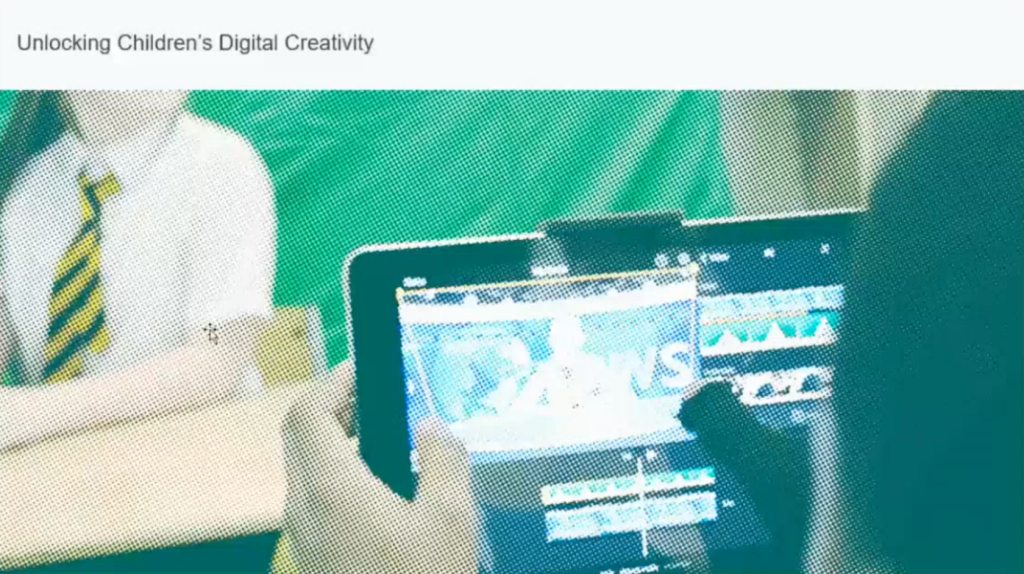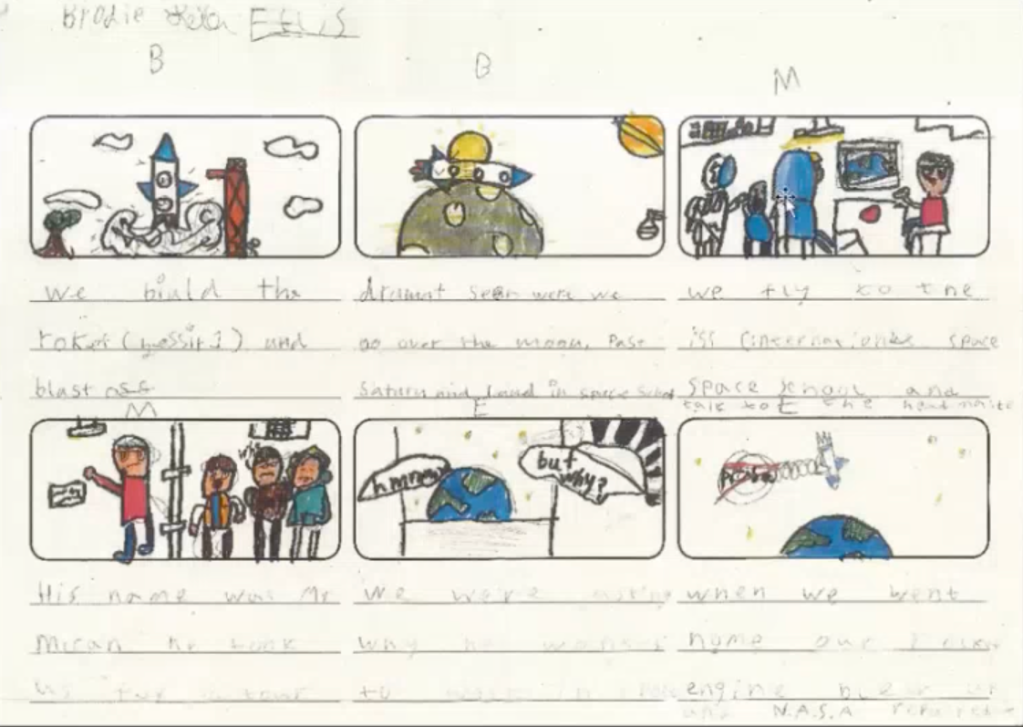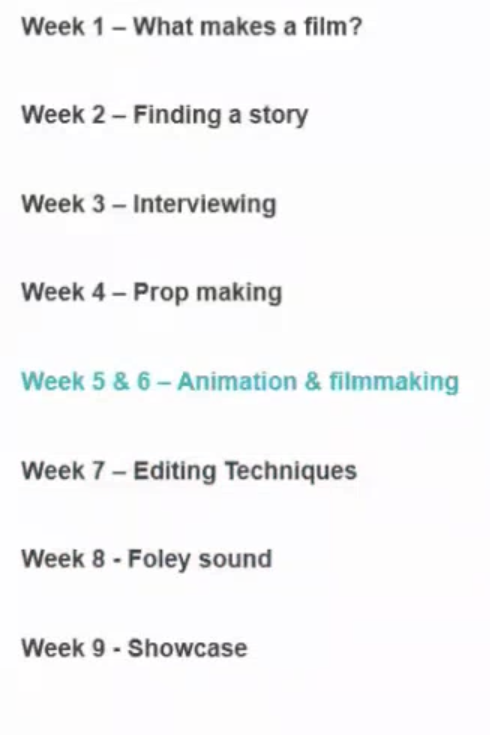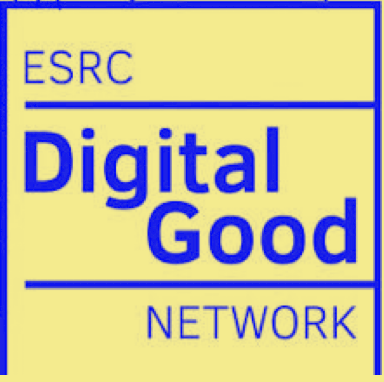Transcript of a talk by Professor Steve Love
Professor Steve Love one of the Co-Investigators for this project, gave a talk at the second networking event. The following is a transcript of his talk.

I’m Steve love from the School of Innovation and Technology at the Glasgow School of Art. A Professor of User Experience Design and I head up knowledge exchange activities as well.
I’m going to give you a talk which follows on from John’s (Potter) and Jen’s (Shaw) talks. It’s an example of digital good and working with children as co-producers of digital outputs. This is a project we’ve been doing with schools in Glasgow and it’s been funded by Screen Scotland, which is part of Creative Scotland. Part of the motivation for this project was that in Glasgow the schools were all given iPads a few years ago, and the Council and Learning Services were really interested in looking at how to embed digital creativity in the classroom. So, they approached us to see if we could do a project with them. So this project that I’m going to talk about is all about the project brief. It’s all about the children, the skills and their local communities.
The group of schools were all primary schools in Scotland. So they’re all aged P4 to P6, that is between seven and 11 years of age. I’m going to talk you through the project and show you the outcomes and talk a bit about the future, how we will be planning to develop this work.
The project is called “Unlocking Children’s Digital Creativity” and it focused on the use of visual and audio for storytelling. We wanted the children to make a film about the local communities and where the school was placed within the local communities. What school did in the local community.
We got a whole range of outputs from documentaries, interviews to a fake news report. The key thing was they (the funders) wanted a bottom up approach to digital creativity with school children. So, the work was led by the children and we were there to help them. We were their co-producers of what they were doing and we worked together on this project over a period of eight weeks.
The first thing we spoke to the children about was what makes a film. We introduced them to this by creating process cards which were basically just rectangular cards that gave different aspects of making a film, like set design, sound design, special effects and audio.
Then we used a “Rich Pictures” (drawing) process to help the pupils think about what they would like to make a film about. This was an example from one of the schools. It’s all about an alien that crash landed in Kings Park and some of the kids’ parents went missing and the whole idea of the story was the children had to save them. I remember we were showing this to Screen Scotland. What they particularly liked about it from a film production viewpoint was the kids didn’t immediately jump into storyboards.

Screen Scotland really liked this idea of people using rich pictures to come up with design ideas, creative ideas before narrowing them down and moving on to the storyboards. So here’s an example of a storyboard of how the kids decided that they would make the film about aliens.

In the third week we went on to tell the kids how to do interviews and how to set up what kind of questions to ask. We asked them to think about: Why would you ask these questions? How to record an interview? And they began to carry out their interviews. You can see here some of the kids had green screens and they interviewed classmates and they also interviewed members of the public.

In this next one (slide), the kids are interviewing a guy from a small town in Dumfriesshire in Southwest Scotland, and they’re asking all about the riding marches, which is a famous horse riding parade that goes through the town in the summer. After that the children went into prop making and a lot of kids wanted to make animations around the local community and about things happening in their schools. So we provided the schools with all the materials that they needed to take part in these activities, such as balloons and glue for paper mache and we provided them with Plasticine to make models.

In weeks five and six we went on to animation and film-making. I taught the teachers and the kids how to use stop motion animation. They used Zing Studio to help them with their animations and at that point we started to think about editing, but it was the children that were in control of the editing process. We didn’t interfere with their editing process because it was their film.

Then at the end we gave them a session on Foley sounds and they brought in materials like crisp bags that they could russel to to help them produce the sounds that they needed for their animations. We also showed them how to use tools like a Garage Band.
At the end there was a showcase event and some of the schools come into Glasgow Art School. We treated it like a degree show where we set up a room and the children brought in some of the props and their artefacts and we had a show reel for the children to show their films. Then, we had people from the Art School walking around asking the children about the films that they had made
In another place they hired a local community centre and invited members of the public to come in for the children to show the films they had made about the local community. The audience was given the opportunity to ask questions about what the children had done.
In terms of genre, it was really interesting. Some of the classes made documentaries around the use of local food banks. Some children asked Who are the local people? What are the important shops and who are the important people that form the community identity?

The younger classes tended to be more interested in mockumentaries and for some reason might just be a Glasgow thing, but most of these involved zombies and monsters and dragons arriving and causing havoc in Glasgow.

At the end we asked the children and the teachers what they got out the project. The children said a lot of effort went into the films and they liked working in groups. Everyone had responsibilities and roles to play in the group. So they found that quite interesting. One of the children said creativity means just letting your imagination roam free and for me that’s the way it should be, and this is an idea of what is digital good. We should be looking at children’s creativity, unlocking it in interesting and positive ways.
Same with the teachers. The teachers saw a big difference with some of the pupils, especially in the more economically challenged areas of Glasgow. They saw the soft skills of the children being able to articulate and work together on the projects and they said that then translated into other aspects of their school work as well. The teachers said they learned knowledge and skills about filmmaking and processes and methods for using a design led approach in teaching.
